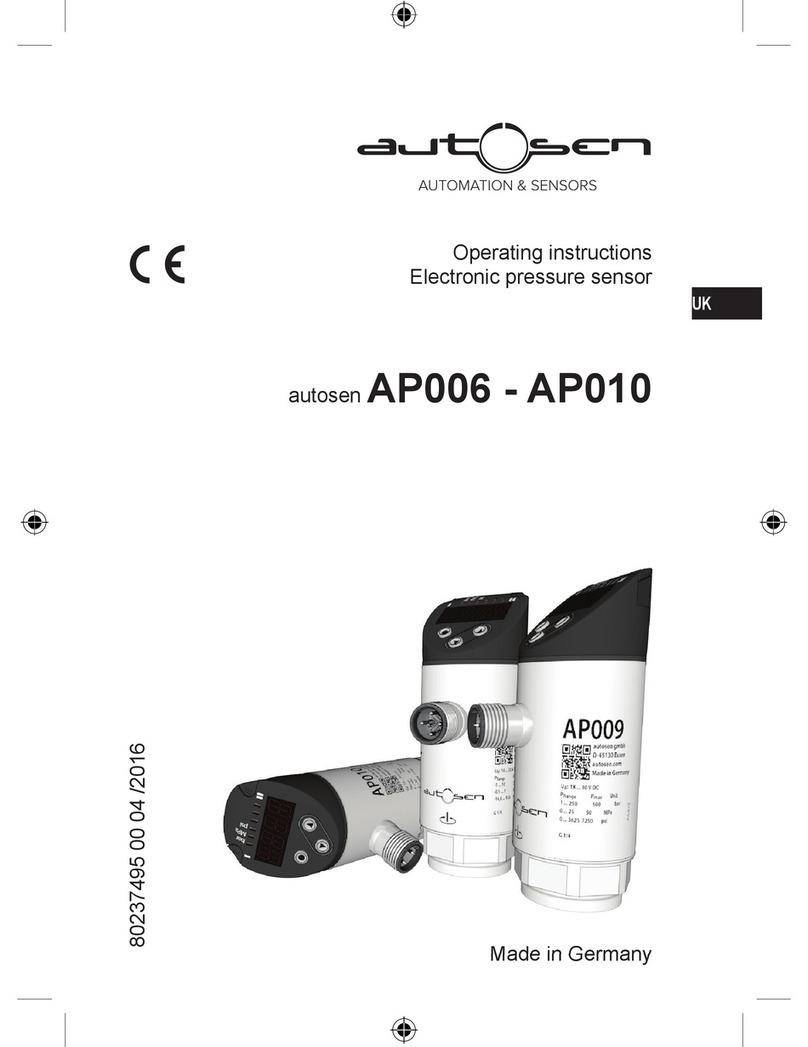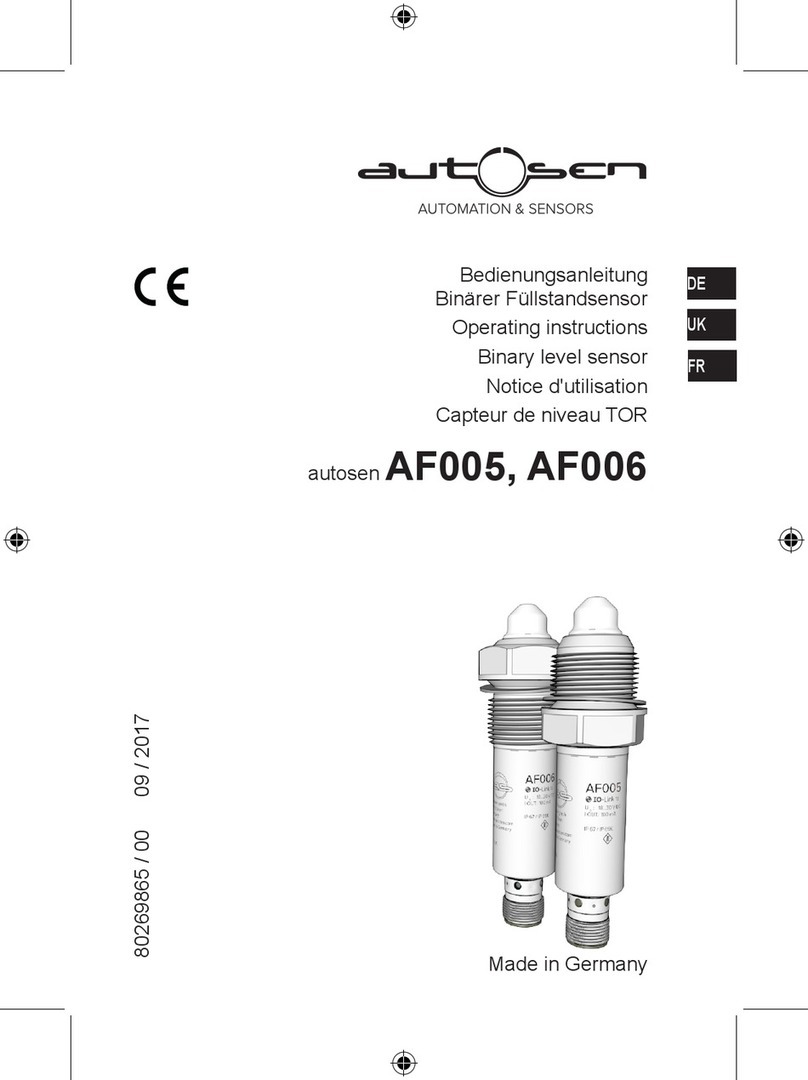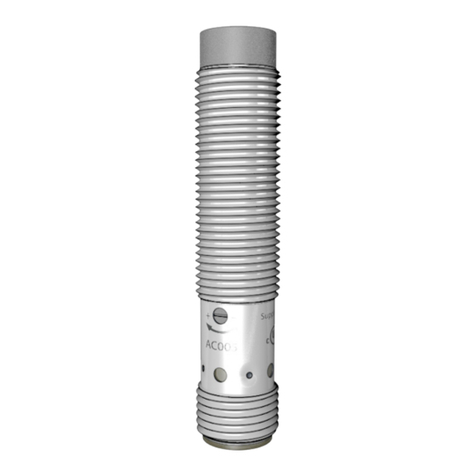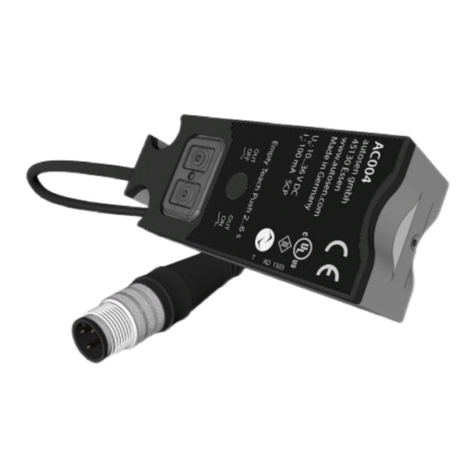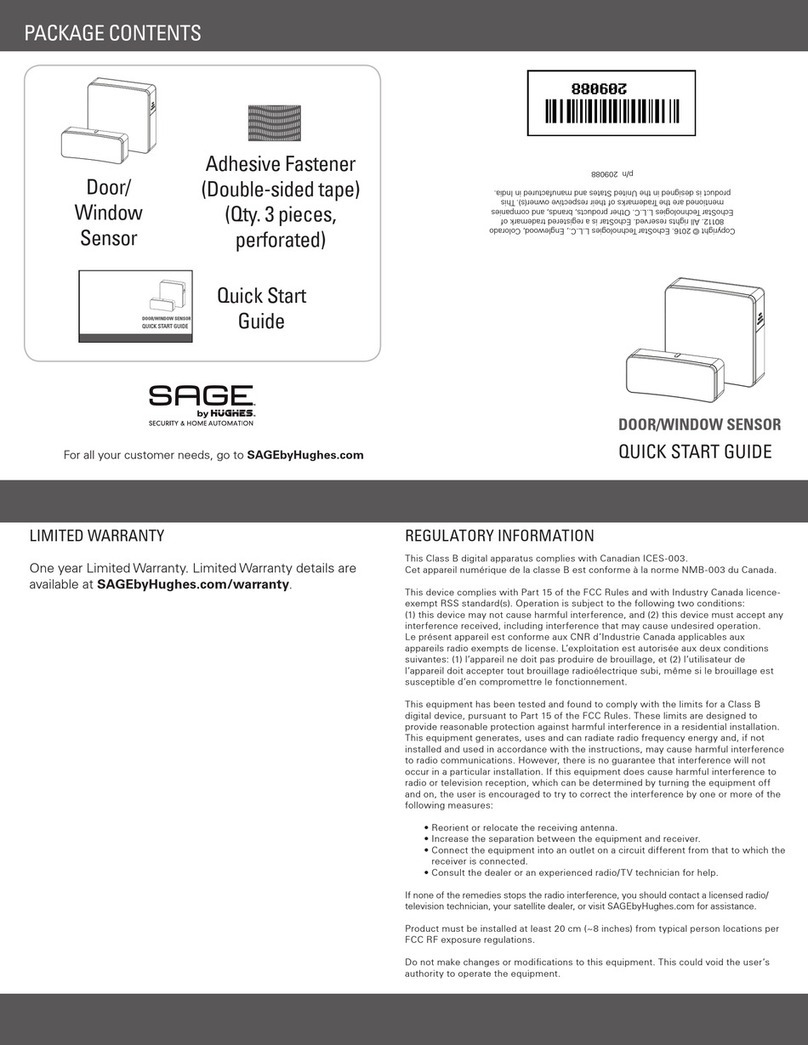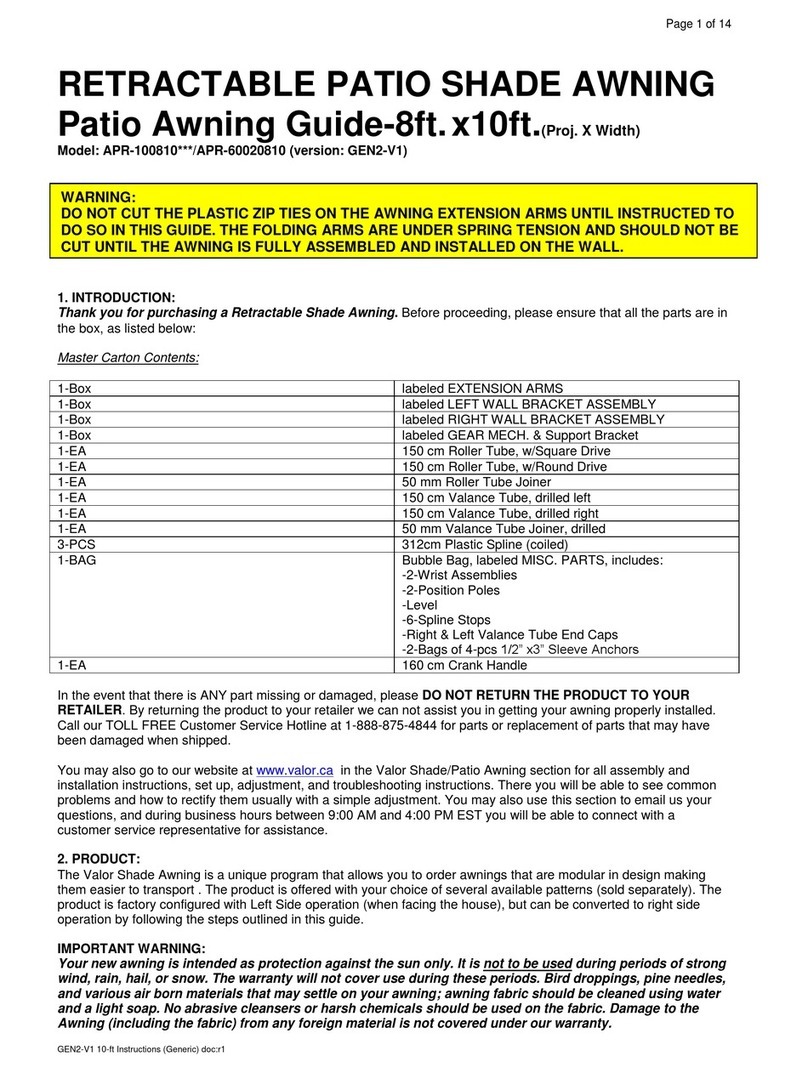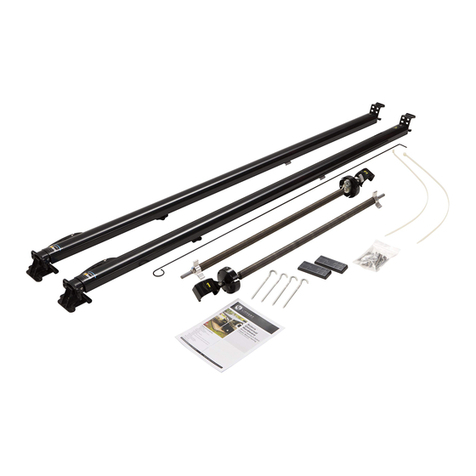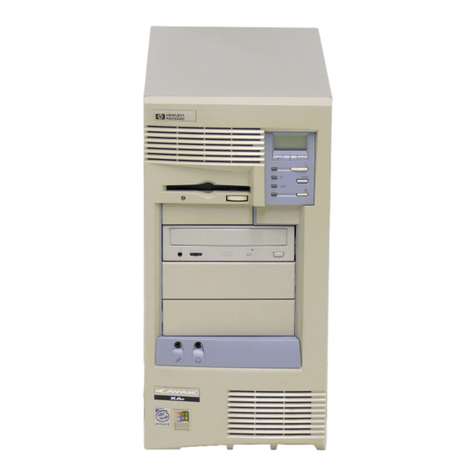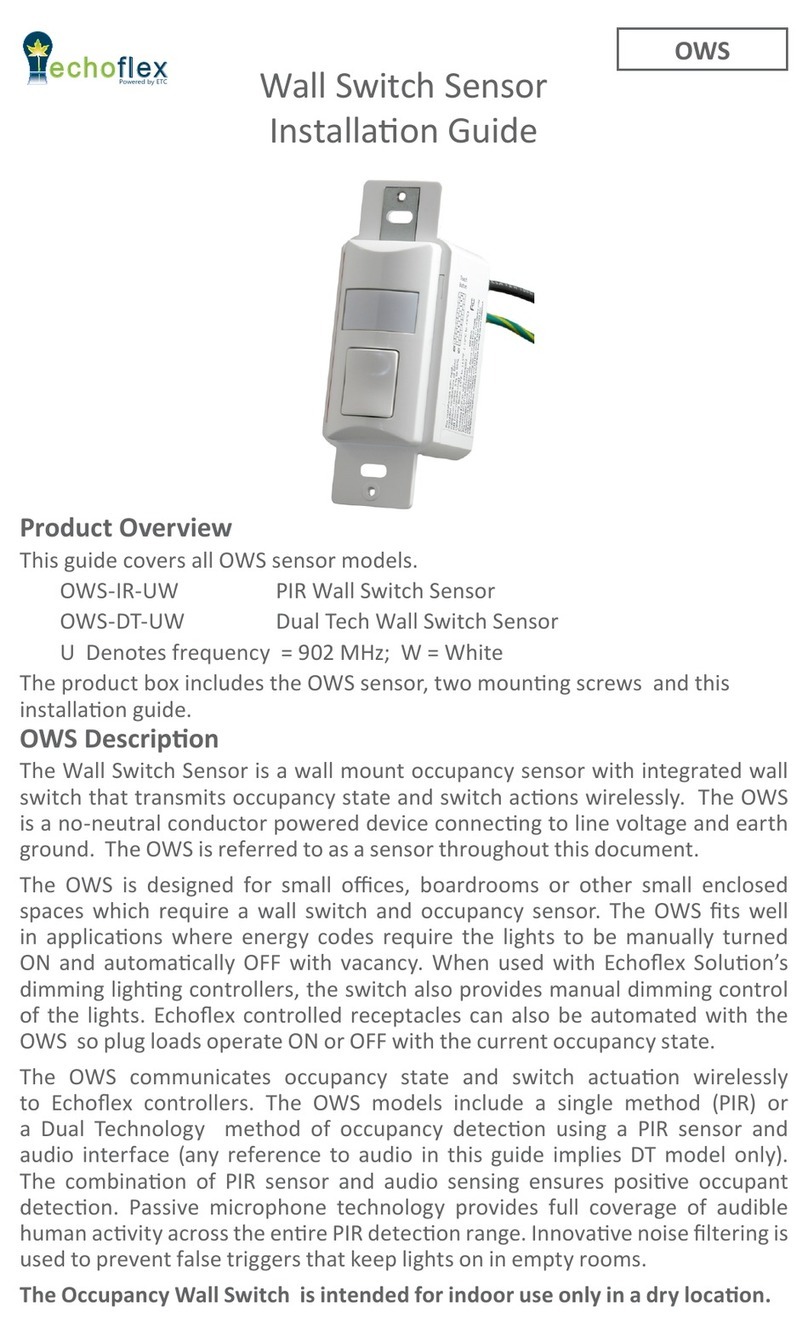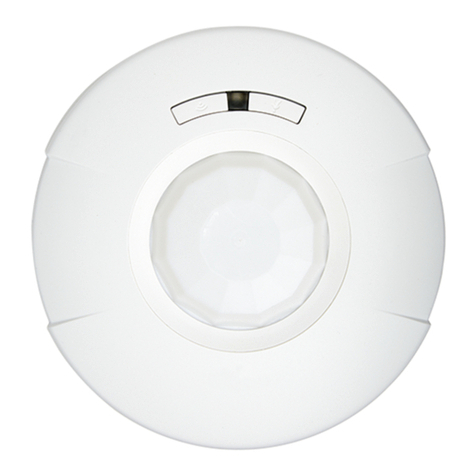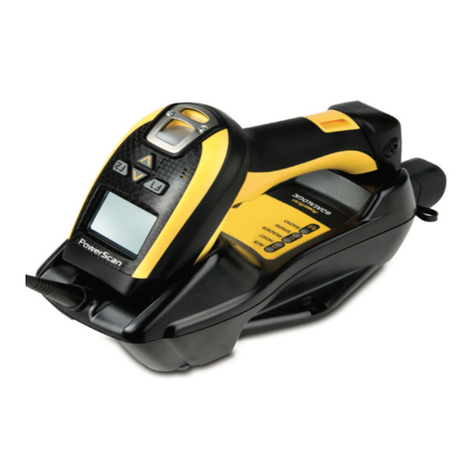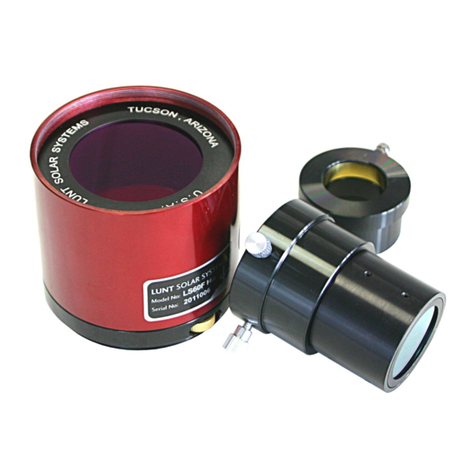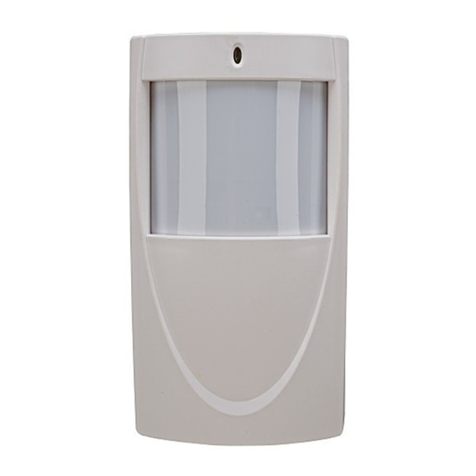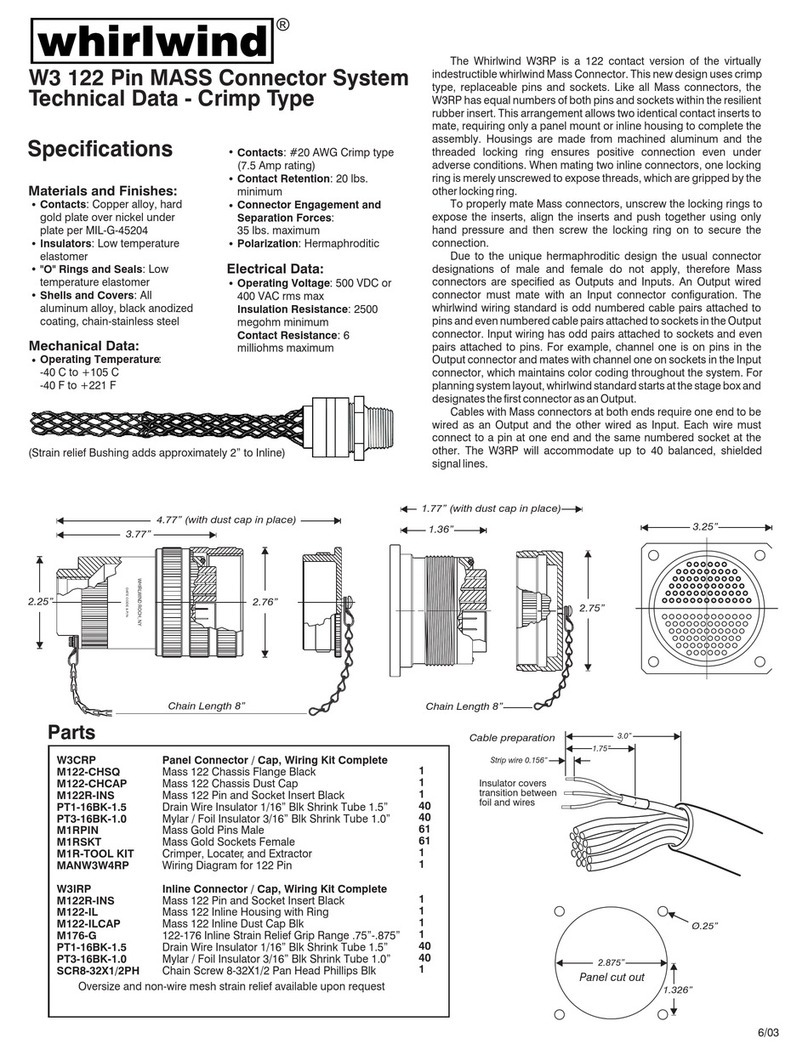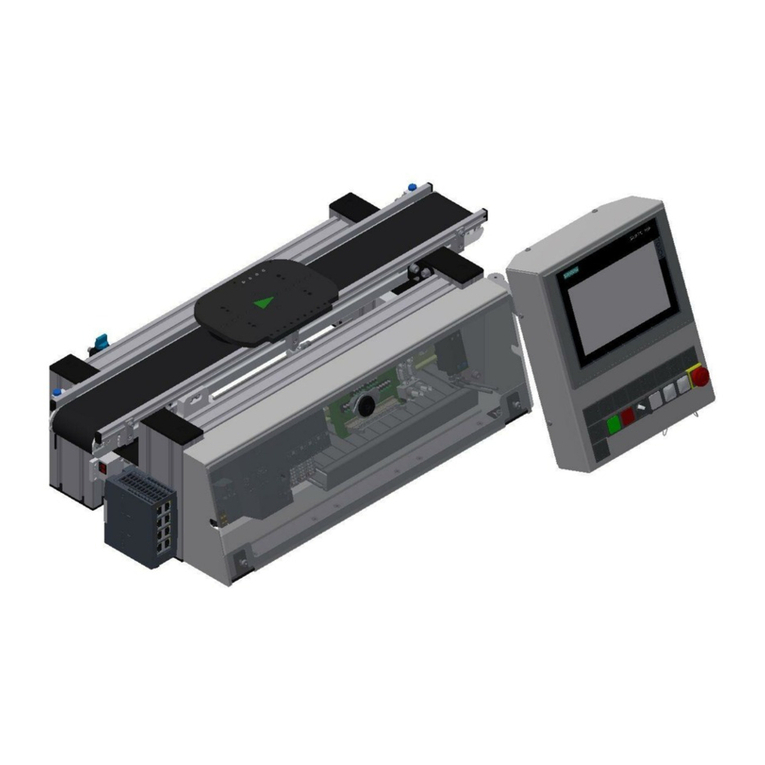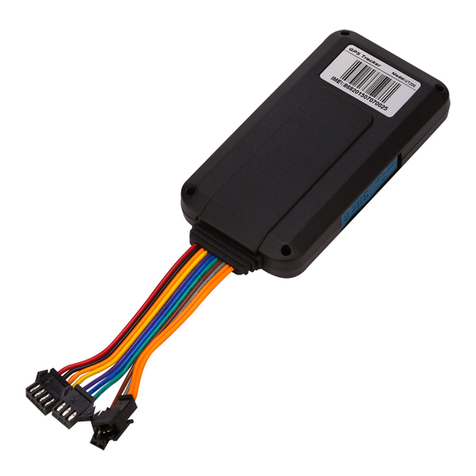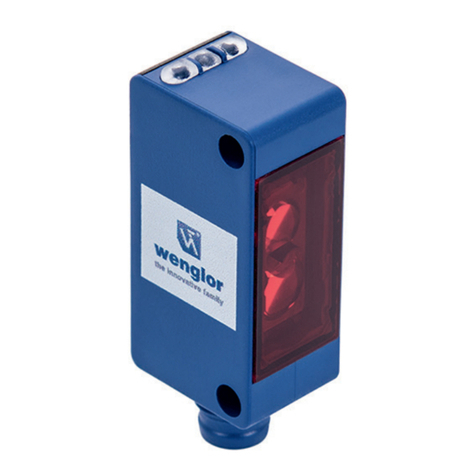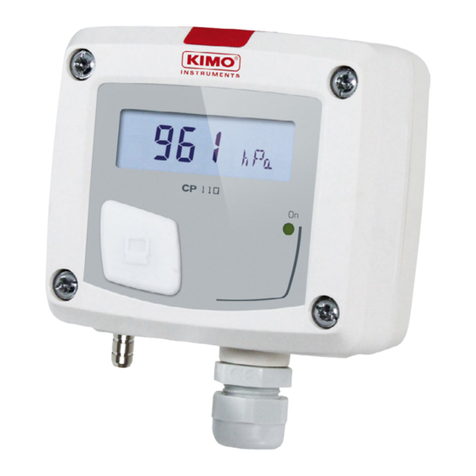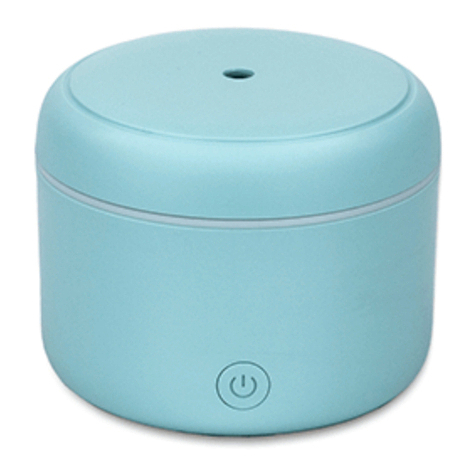autosen AF004 User manual

Operating instructions
Electronic level sensor
autosen AF004
80259948 00 12/2016
Made in Germany
UK

2
Contents
1 Preliminary note���������������������������������������������������������������������������������������������������4
1�1 Symbols used ������������������������������������������������������������������������������������������������4
2 Safety instructions �����������������������������������������������������������������������������������������������4
3 Items supplied������������������������������������������������������������������������������������������������������5
4 Functions and features ����������������������������������������������������������������������������������������7
4�1 Operation with single probe���������������������������������������������������������������������������7
4�2 Operation with coaxial probe �������������������������������������������������������������������������7
4�3 Applications ���������������������������������������������������������������������������������������������������8
4�3�1 Restriction of the application area ��������������������������������������������������������8
5 Function���������������������������������������������������������������������������������������������������������������9
5�1 Measuring principle ���������������������������������������������������������������������������������������9
5�2 Features of the unit��������������������������������������������������������������������������������������10
5�2�1 Easy set-up�����������������������������������������������������������������������������������������10
5�2�2 Display functions ��������������������������������������������������������������������������������10
5�2�3 Switching functions�����������������������������������������������������������������������������10
5�2�4 Offset for indicating the real level in the tank�������������������������������������� 11
5�2�5 Probes for different tank heights��������������������������������������������������������� 11
5�2�6 Safe state �������������������������������������������������������������������������������������������12
5�3 IO-Link ���������������������������������������������������������������������������������������������������������12
6 Installation����������������������������������������������������������������������������������������������������������13
6�1 Installation location / environment ���������������������������������������������������������������13
6�1�1 Unit with single probe �������������������������������������������������������������������������13
6�1�2 Unit with coaxial probe �����������������������������������������������������������������������16
6�2 Installation of the probe �������������������������������������������������������������������������������16
6�2�1 Installation of the rod ��������������������������������������������������������������������������17
6�2�2 Installation of the coaxial pipe ������������������������������������������������������������18
6�3 Shortening of the probe �������������������������������������������������������������������������������19
6�3�1 How to shorten the rod and determine its length L�����������������������������19
6�3�2 Shortening of the coaxial pipe ������������������������������������������������������������19
6�3�3 Determination of the rod length L when coaxial probes are used�������20
6�4 Installation of the unit with single probe�������������������������������������������������������20
6�4�1 Installation in closed metal tanks (without flange plate) ���������������������21
6�4�2 Installation in closed metal tanks (with flange plate) ��������������������������21
6�4�3 Installation in open tanks ��������������������������������������������������������������������22

3
UK
6�4�4 Installation in plastic tanks������������������������������������������������������������������23
6�5 Installation of the unit with coaxial probe in the tank �����������������������������������23
6�6 Alignment of the sensor housing �����������������������������������������������������������������24
7 Electrical connection������������������������������������������������������������������������������������������24
8 Operating and display elements ������������������������������������������������������������������������25
9 Menu������������������������������������������������������������������������������������������������������������������26
9�1 Menu structure���������������������������������������������������������������������������������������������26
9�2 Explanation of the menu������������������������������������������������������������������������������27
10 Parameter setting ��������������������������������������������������������������������������������������������28
10�1 Parameter setting in general ���������������������������������������������������������������������28
10�2 Basic settings (unit on delivery)�����������������������������������������������������������������30
10�2�1 Entering the probe length �����������������������������������������������������������������30
10�2�2 Setting to the medium�����������������������������������������������������������������������30
10�2�3 Entering the type of probe used �������������������������������������������������������30
10�3 Configuration of the display �����������������������������������������������������������������������31
10�4 Offset setting����������������������������������������������������������������������������������������������31
10�5 Setting of output signals ����������������������������������������������������������������������������31
10�5�1 Setting of the output function������������������������������������������������������������31
10�5�2 Set the switching limits (hysteresis function) ������������������������������������31
10�5�3 Set the switching limits (window function) ����������������������������������������32
10�5�4 Setting of the switch-off delay�����������������������������������������������������������32
10�5�5 Response of the outputs in case of a fault ���������������������������������������32
10�5�6 Setting of the delay time after signal loss �����������������������������������������32
10�6 Reset all parameters to factory setting ������������������������������������������������������32
10�7 Changing basic settings ����������������������������������������������������������������������������33
10�7�1 Re-enter the probe length�����������������������������������������������������������������33
10�7�2 Setting to another medium ���������������������������������������������������������������33
10�7�3 New entering of the type of probe used��������������������������������������������33
11 Operation ���������������������������������������������������������������������������������������������������������34
11�1 Operating indicators ����������������������������������������������������������������������������������34
11�2 Read the set parameters ���������������������������������������������������������������������������34
11�3 Changing the display unit in the Run mode �����������������������������������������������34
11�4 Error indications�����������������������������������������������������������������������������������������35
11�5 Output response in different operating states��������������������������������������������36
12 Technical data and scale drawing��������������������������������������������������������������������36
12�1 Setting ranges ������������������������������������������������������������������������������������������36

4
1 Preliminary note
1.1 Symbols used
►Instructions
> Reaction, result
[…] Designation of keys, buttons or indications
→Cross-reference
Important note
Non-compliance may result in malfunction or interference�
Information
Supplementary note�
2 Safety instructions
• Please read this document prior to set-up of the unit� Ensure that the product is
suitable for your application without any restrictions�
• If the operating instructions or the technical data are not adhered to, personal
injury and/or damage to property can occur�
• Improper or non-intended use may lead to malfunctions of the unit or to
unwanted effects in your application� That is why installation, electrical
connection, set-up, operation and maintenance of the unit must be carried out
by qualified personnel authorised by the machine operator�
• In order to guarantee the correct operation of the unit, it is necessary to use the
unit in media to which it is sufficiently resistant (→ Technical data).
13 Servicing����������������������������������������������������������������������������������������������������������37
14 Applications������������������������������������������������������������������������������������������������������38
14�1 Minimum level monitoring with early warning and alarm ���������������������������38
14�2 Pumping station / empty the tank with overflow protection������������������������39
14�3 Storage tank ����������������������������������������������������������������������������������������������40
15 Factory setting �������������������������������������������������������������������������������������������������41

5
UK
• The responsibility as to the suitability of the unit for the application lies with the
operator� The manufacturer assumes no liability for consequences of misuse by
the operator�
• Improper installation and use of the unit result in a loss of the warranty claims
• The unit may cause radio interference in domestic areas� If interference occurs,
the user must take appropriate remedial actions�
• The unit complies with the standard EN 61000-6-4 and is a class A product�
The radiated energy of the microwaves is, for example, much below that of
mobile phones� According to the current state of science the operation of the
unit can be classified to be harmless to human health�
3 Items supplied
• Level sensor AF004
• Operating instructions
In addition, the following is necessary for installation and operation:
• 1 rod (for operation of the unit with single probe → 4.1)
• plus 1 coaxial pipe (for operation of the unit with coaxial probe → 4.2)
• mounting material (if necessary, a launching plate → 4.1)

6
The following components are available as accessories:
Rods Length (cm / inch) Order number
45 / 17,7 AA926
70 / 27,6 AA927
100 / 39,4 AA928
160 / 63�0 AA944
Coaxial pipes
with process connection G¾ Length (cm / inch) Order number
45 / 17�7 AA929
70 / 27�6 AA930
100 / 39�4 AA931
160 / 63�0 AA945
Flange plates Size / process connection Order number
73 - 90 / G¾ AA941
65 - 80 / G¾ AA942
Only use rods and coaxial pipes from autosen gmbh� The optimum
function is not ensured when using components from other manufacturers�

7
UK
4 Functions and features
The unit continuously detects the level in tanks and generates output signals
according to the parameter settings�
2 switching outputs are available� They can be set separately�
4.1 Operation with single probe
The single probe is made up of one individual rod� Operation with single probe is
suited for the detection of aqueous media, in particular of heavily soiled aqueous
media�
For the correct function when used with single probe, the unit needs a
large enough metal launching plate� It is necessary for transferring the
microwave pulse to the tank with optimum transmission power�
The flange plates that are available as accessories are not sufficient as
launching plates (for suitable launching plates → 6.4).
For installation in closed metal tanks, the tank lid serves as a launching
plate� For installation in open metal tanks, tanks made of plastic or metal
tanks with plastic lids a sufficiently large fixing plate, a metal plate or
similar must be used (→ 6.4.3 / → 6.4.4).
For operation with single probe, minimum distances to tank walls, objects
in the tank, bottom of the tank and further level sensors must be adhered
to (→ 6.1.1).
4.2 Operation with coaxial probe
The coaxial probe is made up of an inner rod and an outer probe pipe
(coaxial pipe)� The rod is centred in the coaxial pipe by one or several spacers�
In case of operation with a coaxial probe media with a low dielectric constant
(e�g� oil and oil-based media) are detected in addition to aqueous media�
No launching plate is required for operation with coaxial probe�
Furthermore, no minimum distances to tank walls and objects in the tank
are required�

8
4.3 Applications
• Water, water-based media
• Oils, oil-based media (only for operation with coaxial probe)
Application examples:
• Detection of coolant emulsion in a machine tool�
• Detection of cleaning liquid in a parts cleaning system�
• Monitoring of hydraulic oil in a hydraulic power unit (only for operation with
coaxial probe)�
4.3.1 Restriction of the application area
Incorrect measurements or signal loss may be caused by the following
media:
- Highly absorbing surfaces (e�g� foam)�
- Intensely bubbling surfaces�
- Media which are very inhomogeneous, separate from each other thus
forming separation layers (e�g� oil layer on water)�
►Check the function by performing an application test�
► Installation in a steady area (→ 6.1).
> In case of signal loss, the unit displays [E�033] and switches the
outputs to a defined state (→ 11.5).
• The unit is not suitable for bulk materials (e�g� plastic granulates)�
• If the unit is to be used in acids or alkalis, in hygienic areas or in electroplating
applications: first check the compatibility of the product materials (→ 12
Technical data and scale drawing) with the media to be monitored�
• The unit is not suitable for applications where the probe is subjected to
permanent and high mechanical stress (e�g� strongly moving viscous media or
strongly flowing media)�
• In case of operation with single probe: use preferably in metal tanks� When
installed in plastic tanks, deterioration caused by electromagnetic interference
may occur (noise immunity according to EN61000-6-2)�
Corrective measures: → 6.4.4.
• In case of operation with coaxial probe: not suitable for soiled or viscous media
and media prone to formation of deposit�
Maximum viscosity: 500 MPa
·
s�

9
UK
5 Function
5.1 Measuring principle
Fig. 5-1 Fig. 5-2
D
The unit operates to the principle of guided wave radar� It measures the level
using electromagnetic pulses in the nanosecond range�
The pulses are transmitted by the sensor head and guided along the rod (fig� 5-1)�
When they hit the medium to be detected they are reflected and guided back
to the sensor (fig� 5-2)� The time between transmitting and receiving the pulse
directly relates to the travelled distance (D) and the current level� The reference for
distance measurement is the lower edge of the process connection�
The figures show operation with single probe� In case of operation with a
coaxial probe, the guided wave runs only along the inside of the coaxial
pipe�

10
5.2 Features of the unit
5.2.1 Easy set-up
• When the unit is supplied with operating voltage for the first time, the probe
length, the medium to be detected and the type of probe used must be entered�
Then the unit is ready for operation (→ 10.2).
• If necessary, parameters for the output signals and optimisation of the
monitoring functions can be set (→ 10.3 to → 10.5).
• All settings can also be carried out before installation of the unit�
• Reset to the factory settings is possible�
• Electronic lock can be set to prevent unintentional operations�
5.2.2 Display functions
The unit displays the current level, either in cm, inch or in percent of the final
value of the measuring range� Factory setting: cm� The display unit is defined by
programming (→ 10.3). In the Run mode, it can be temporarily switched between
length indication (cm / inch) and percentage:
►briefly press [Set]�
> The selected unit is displayed for 15 s, the corresponding LED is lit� With each
push of the button the display type is changed�
The set unit of measurement and the switching status of the outputs are indicated
by LEDs�
5.2.3 Switching functions
The unit signals via two switching outputs OUT1 / OUT2 that a set limit level
has been reached or that the level is below the limit value� For each output the
following switching functions can be selected:
• Hysteresis function / normally open (fig� 5-3): [OUx] = [Hno]�
• Hysteresis function / normally closed (fig� 5-3): [OUx] = [Hnc]�
First the set point (SPx) is set, then the reset point (rPx) with the requested
difference�

11
UK
• Window function / normally open (fig� 5-4): [OUx] = [Fno]�
• Window function / normally closed (fig� 5-4): [OUx] = [Fnc]�
The width of the window can be set by means of the difference between
FHx and FLx� FHx = upper value, FLx = lower value�
Fig. 5-3 Fig. 5-4
L = level; HY = hysteresis; FE = window
• For each switching output a switch-off delay of max� 60 s can be set (e�g� for
especially long pump cycles)�
5.2.4 Offset for indicating the real level in the tank
The zone between tank bottom and lower edge of the probe can be entered as
offset value [OFS]� So display and switch points refer to the actual level�
5.2.5 Probes for different tank heights
• The unit can be installed in tanks of different sizes� Probes in different lengths
are available� To adapt to the tank height, each probe can be shortened� The
minimum probe length is 10 cm, the maximum probe length is 160 cm�
• Probe and housing can be rotated without restriction� This enables easy
installation and orientation of the head of the unit after installation�

12
5.2.6 Safe state
• In case of a fault a safe state can be defined for each output�
• If a fault is detected or if the signal quality is below a minimum value, the
outputs pass into the "safe state"� For this case the response of the outputs can
be set via the parameters [FOU1], [FOU2]�
• Temporary loss of signal caused e�g� by turbulence or foam formation can be
suppressed by a delay time (→ 10.5.6 [dFo]). During the delay time the last
measured value is frozen� If the measured signal is received again in sufficient
strength within the delay time, the unit continues to work in normal operation�
If, however, it is not received again in sufficient strength within the delay time,
the outputs pass into the safe state�
In case of heavy foam formation and turbulence, note the examples of how
to create a steady area (→ 6.1.2).
5.3 IO-Link
General information
This unit has an IO-Link communication interface which requires an IO-Link-
capable module (IO-Link master) for operation�
The IO-Link interface enables direct access to the process and diagnostic data
and provides the possibility to set the parameters of the unit during operation� In
addition communication is possible via a point-to-point connection with a USB
adapter cable�
Further information about IO-Link is available at www� �com�
Device-specific information
You will find the IODDs necessary for the configuration of the IO-Link unit and
detailed information about process data structure, diagnostic information and
parameter addresses at www�autosen�com�
Parameter setting tools
You will find all necessary information about the required IO-Link hardware and
software at www�autosen�com�

13
UK
6 Installation
6.1 Installation location / environment
• Vertical installation from the top is preferred�
6.1.1 Unit with single probe
• For a safe function, the unit requires a launching plate (→ 6.4).
• For optimum operation the unit is to be installed as near as possible to the tank
wall� Distance between the rod and the tank wall: minimum 40 mm, maximum
300 mm�
• The following minimum distances between the rod and tank walls, objects in
the tank (B), tank bottom and other level sensors must be adhered to:
50mm
10mm
100mm
B40mm
• For tank walls which are not straight, steps, supports or other structures in the
tank a distance of 50 mm to the tank wall must be adhered to�
• For probe lengths > 70 cm the rod can be considerably deflected by movement
of the medium� To avoid contacting the tank wall or other structures in the tank
in such cases, the minimum distances should be increased�
Reference values:
Probe length Distance to the tank wall or structures in the tank
70���100 cm 100 mm
100���160 cm 180 mm
• If the medium is strongly polluted, there is the risk that a bridge forms
between the rod and the tank wall or structures in the tank� To avoid incorrect

14
measurements: adhere to increased minimum distances depending on type
and intensity of the soiling�
• For installation in pipes:
- The inside pipe diameter (d) must be at least 100 mm (fig� 6-1)�
- Only install the unit in metal pipes�
• For installation in connection pieces:
- The diameter of the boss (d) must be at least 60 mm (fig� 6-2)�
- The height of the boss (h) must not exceed 40 mm (fig� 6-2)�
Although the unit can be installed in a boss, installation in a flat tank lid is
recommended� A boss will impede the distribution of the microwaves�
Fig. 6-1 Fig. 6-2
d
d
h
• Do not install the unit in the immediate vicinity of a fill opening (fig� 6-3)�
If possible, install a fill pipe (A) in the tank (fig� 6-4)� Minimum distance between
the fill pipe and the rod = 50 mm; higher for probe lengths > 70 cm and in case
of heavy soiling (→ 6.1.1).

15
UK
Fig. 6-3 Fig. 6-4
50mm
A
To avoid incorrect measurements in case of heavy foam formation and
turbulence:
►if possible, install the sensor in a steady area�
Example how to create a steady area:
- Use of a coaxial probe (only for clean, low-viscosity media)
- Installation in bypass or still pipe (see fig� 6-5)
- Separation of the installation location by metal sheets / perforated sheets
(without figure)
Minimum diameter of the bypass and still pipe: d = 100 mm�
The upper access to the steady area (fig� 6-5: A / B) has to be above
the maximum level� The lower access (fig� 6-5: C / D) or the area with
perforated sheet etc� has to be below the minimum level� This ensures
that neither foam nor turbulence impact the sensor zone� When perforated
sheets or the like are used, soiling (e�g� by metal swarf, particles, ���) can
also be avoided�

16
Fig.: 6-5
d
d
AB
CD
6.1.2 Unit with coaxial probe
• No minimum distances to the tank wall and the
baffles (B) are required�
• Minimum distance to the bottom of the tank:
10 mm�
• The vent hole (A) must not be covered by
mounting elements or similar�
• Do not install the unit in the immediate vicinity of
a fill opening� No water jets must enter into the
holes of the coaxial pipe�
A
B
10 mm
• Note in case of foam formation: the vent of the coaxial pipe must be above the
maximum level� The lower edge of the coaxial pipe must be below the minimum
level�
6.2 Installation of the probe
Rod and coaxial pipe are not included in the scope of delivery� They must be
ordered separately (→ 3 Items supplied).

17
UK
6.2.1 Installation of the rod
Fixing of the rod:
►Screw the rod to the unit and tighten it�
Recommended tightening torque: 4 Nm�
For ease of installation and removal the rod
connection can be rotated without restriction� Even
if rotated several times there is no risk of damage to
the unit�
6
In case of high mechanical stress (strong vibration, moving viscous media) it
may be necessary to secure the screw connection, e�g� by a screw retaining
compound�
Substances such as screw retaining compounds may migrate into the
medium�
Make sure that they are harmless�
When using mechanical means of securing (e�g� tooth lock washer), protruding
edges must be avoided� They may cause interference reflection�

18
6.2.2 Installation of the coaxial pipe
This subchapter is only relevant if the unit is to be operated with a coaxial probe�
The coaxial pipe and the rod must be of the same end length� The coaxial
pipe can be shortened (→ 6.3.2).
►Screw the rod to the unit and tighten it�
Recommended tightening torque: 4 Nm�
►Slide the sensor seal (A) onto the thread�
►Slide the coaxial pipe (B) onto the rod� Carefully
centre it and carefully move the rod through the
centring piece (C) (for lengths > 140 cm through
both centring pieces) of the coaxial pipe� Do not
damage the centring pieces�
►Screw onto the sensor thread and tighten�
A
C
B
32
32

19
UK
6.3 Shortening of the probe
6.3.1 How to shorten the rod and determine its length L
The rod can be shortened to adapt the probe to different tank heights�
Ensure that the probe length is never below the minimum permissible probe
length of 10 cm (Lmin)! The unit does not support probe lengths below 10
cm� If shorter probes are used, measurement errors can occur�
Proceed as follows:
►Screw the rod to the unit�
►Mark the desired length (L) on the rod� The
reference point is the lower edge of the process
connection�
►Remove the rod from the unit�
►Shorten the rod at the mark�
►Remove all burrs and sharp edges�
►Screw the rod to the unit again and tighten it�
Recommended tightening torque: 4 Nm�
►Precisely measure the probe length L, note the
value� It must be entered during parameter setting
of the unit (→ 10.2).
Lmin
L
Lmin= 10 cm
6.3.2 Shortening of the coaxial pipe
The coaxial pipe and the rod must be of the same end length:

20
Fig.: 6-6
►Remove fastening bracket and
centring piece (A, B)�
►Shorten the coaxial pipe to the
requested length: LK= L + 9 mm�
►After shortening, at least one hole
(C) for insertion of the fixing bracket
has to be left�
►Remove all burrs and sharp edges�
►Insert centring piece (A) at the
lower end of the pipe and attach it
using the fixing bracket (B) at the
lower hole (C)�
AB
C
LK= length of the coaxial pipe
L = length of the rod from the lower edge
of the process connection (→ 6.3.1)
6.3.3 Determination of the rod length L when coaxial probes are used
Only relevant if the rod length L (→ 6.3.1) is unknown:
►Measure the exact total length LK of the coaxial pipe (→ fig. 6-6, on the right).
►Deduct 9 mm from the total length of the coaxial pipe: LK– 9 mm = L
► Note down L. It must be entered during parameter setting of the unit (→ 10.2).
6.4 Installation of the unit with single probe
For the correct function when used with single probe, the unit needs a
large enough metal launching plate� It is necessary for transferring the
microwave pulse to the tank with optimum transmission power� The flange
plates that are available as accessories are not sufficient as launching
plates�
For installation in closed metal tanks, the tank lid serves as a launching plate
(R in fig� 6-7 and 6-11)� 2 ways of installation are possible:
• Screw in a G¾ process connection in the tank lid (→ 6.4.1).
• Installation in the tank lid using a flange plate, e�g� for tanks with thin walls
(→ 6.4.2).
Furthermore, installation in open tanks (→ 6.4.3) and plastic tanks is possible
(→ 6.4.4).
Table of contents
Other autosen Accessories manuals
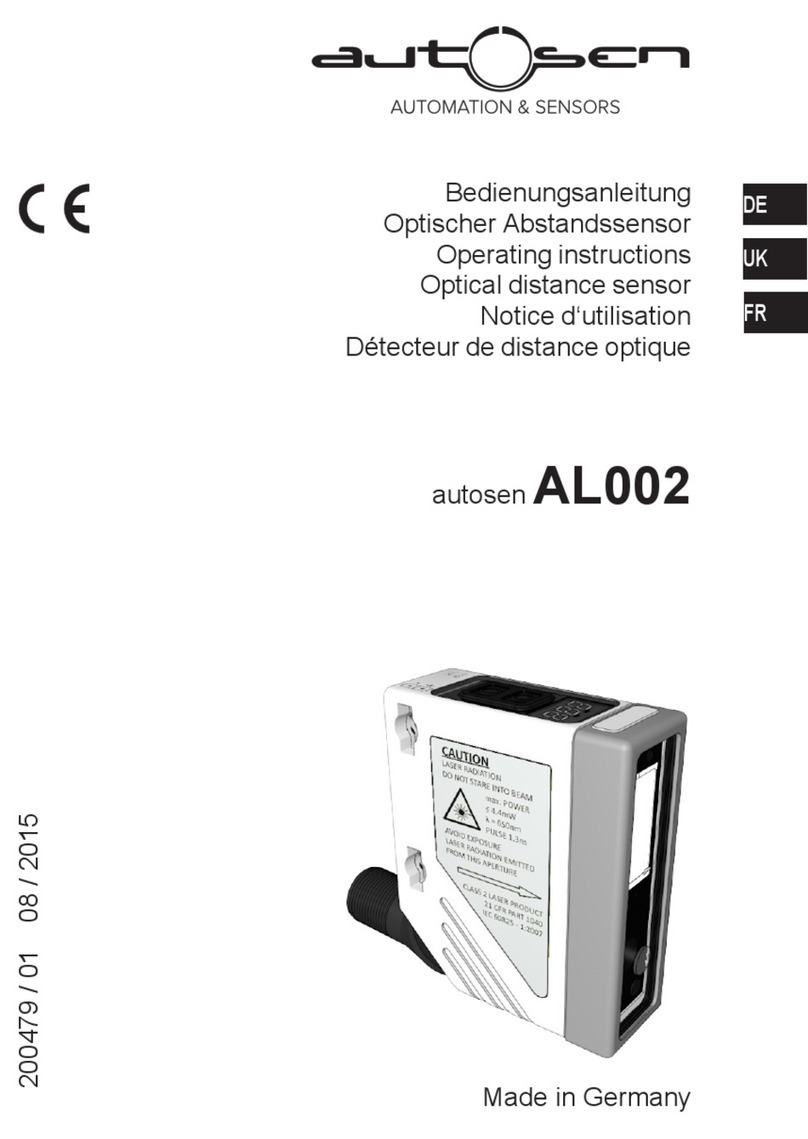
autosen
autosen AL002 User manual

autosen
autosen AL005 User manual
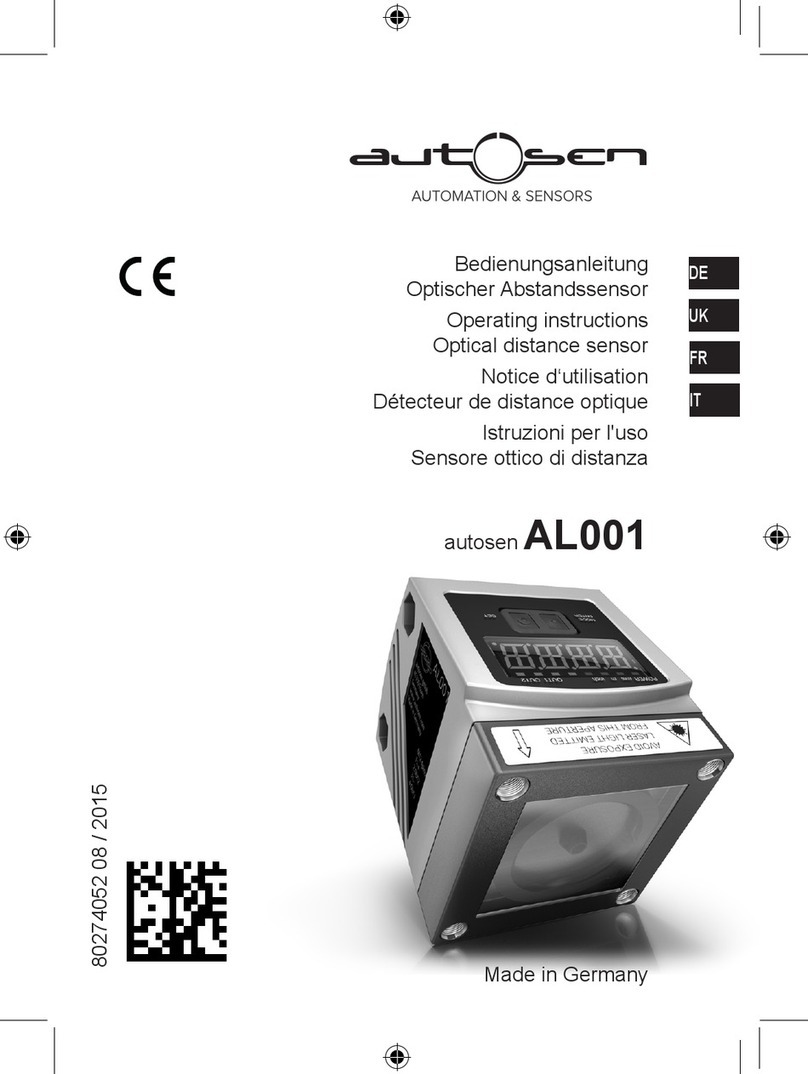
autosen
autosen AL001 User manual

autosen
autosen AI006 User manual

autosen
autosen AL006 User manual
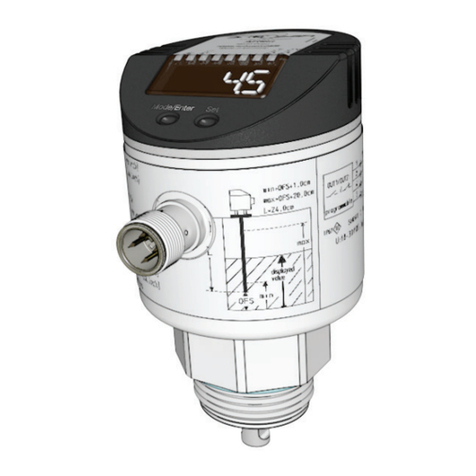
autosen
autosen AF003 User manual

autosen
autosen AL004 User manual

autosen
autosen AU011 User manual

autosen
autosen AL007 User manual

autosen
autosen AU001 User manual

